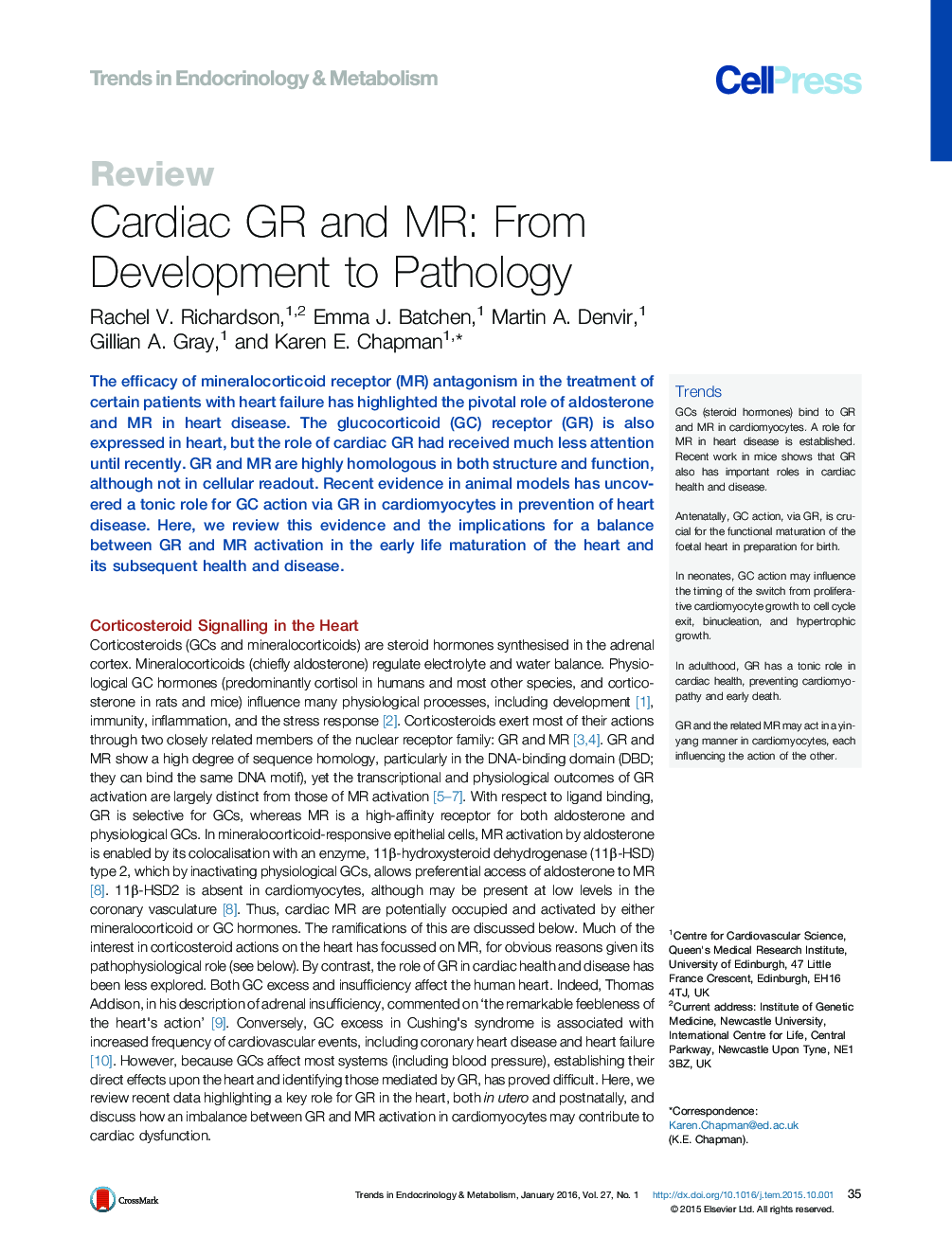| Article ID | Journal | Published Year | Pages | File Type |
|---|---|---|---|---|
| 2810129 | Trends in Endocrinology & Metabolism | 2016 | 9 Pages |
The efficacy of mineralocorticoid receptor (MR) antagonism in the treatment of certain patients with heart failure has highlighted the pivotal role of aldosterone and MR in heart disease. The glucocorticoid (GC) receptor (GR) is also expressed in heart, but the role of cardiac GR had received much less attention until recently. GR and MR are highly homologous in both structure and function, although not in cellular readout. Recent evidence in animal models has uncovered a tonic role for GC action via GR in cardiomyocytes in prevention of heart disease. Here, we review this evidence and the implications for a balance between GR and MR activation in the early life maturation of the heart and its subsequent health and disease.
TrendsGCs (steroid hormones) bind to GR and MR in cardiomyocytes. A role for MR in heart disease is established. Recent work in mice shows that GR also has important roles in cardiac health and disease.Antenatally, GC action, via GR, is crucial for the functional maturation of the foetal heart in preparation for birth.In neonates, GC action may influence the timing of the switch from proliferative cardiomyocyte growth to cell cycle exit, binucleation, and hypertrophic growth.In adulthood, GR has a tonic role in cardiac health, preventing cardiomyopathy and early death.GR and the related MR may act in a yin-yang manner in cardiomyocytes, each influencing the action of the other.
